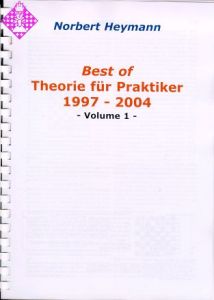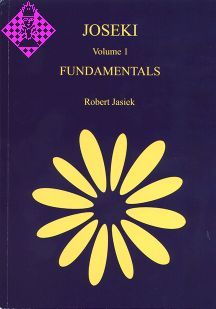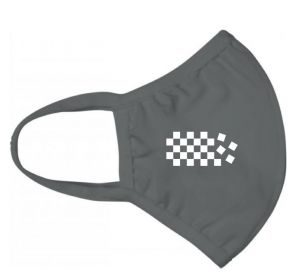Artikelnummer
LGJASJF1
Autor
Joseki Volume 1 - Fundamentals
Eigenschaften
268 Seiten, kartoniert, Eigenverlag, 1. Auflage 2009
The revolutionary quality and great amount of contents creates the most profound reference to the fundamentals and their application to josekis. The book invents a classification of move types, meanings of stones and development directions. Systematic structure, careful definitions of terms and many principles provide us with a complete and easily applicable language to guide our thinking and planning. As a consequence, players of all levels can broaden their knowledge and improve their playing strength.
Introduction
The Difficulty of Understanding Josekis
When the proverb says "Study josekis and become two stones weaker", it warns us that learning a dictionary's move sequences by heart and without any further understanding of their meaning is useless or even counter-productive. Similarly it is futile to memorise 100 professional games without being aware of their strategy, reasons for move order, tactics and positional judgement. Why then do writers of joseki literature advertise joseki study as an essential and deep source for improving one's playing strength? Why could the author rapidly jump from 5 to 1 kyu mostly because of reading Ishida's Dictionary of Basic Joseki thoroughly?
Josekis are so difficult because they involve every major aspect of the game: life and death, territory, influence, thickness, aji, direction, strategic decisions and so on. They require perception of both the microcosmos of the meaning and efficiency of each move and of the global view of the whole board interaction and development. Without a broad and profound understanding of all those aspects, one cannot hope to understand josekis well. On the other hand, this necessity offers us the great chance to explore the fundamentals of Go strategy, too! Herein lies the key to becoming stronger.
The variety of involved aspects prevents a shortcut to josekis. Rome was not built in one day. It is insufficient to read a book about, for example, josekis and direction of play only. Rather the reader must be prepared to acquire a much broader knowledge, as it is conveyed here.
Introduction
The Difficulty of Understanding Josekis
When the proverb says "Study josekis and become two stones weaker", it warns us that learning a dictionary's move sequences by heart and without any further understanding of their meaning is useless or even counter-productive. Similarly it is futile to memorise 100 professional games without being aware of their strategy, reasons for move order, tactics and positional judgement. Why then do writers of joseki literature advertise joseki study as an essential and deep source for improving one's playing strength? Why could the author rapidly jump from 5 to 1 kyu mostly because of reading Ishida's Dictionary of Basic Joseki thoroughly?
Josekis are so difficult because they involve every major aspect of the game: life and death, territory, influence, thickness, aji, direction, strategic decisions and so on. They require perception of both the microcosmos of the meaning and efficiency of each move and of the global view of the whole board interaction and development. Without a broad and profound understanding of all those aspects, one cannot hope to understand josekis well. On the other hand, this necessity offers us the great chance to explore the fundamentals of Go strategy, too! Herein lies the key to becoming stronger.
The variety of involved aspects prevents a shortcut to josekis. Rome was not built in one day. It is insufficient to read a book about, for example, josekis and direction of play only. Rather the reader must be prepared to acquire a much broader knowledge, as it is conveyed here.
| Gewicht | 210 g |
|---|---|
| Hersteller | Eigenverlag |
| Breite | 15,2 cm |
| Höhe | 22,3 cm |
| Medium | Buch |
| Erscheinungsjahr | 2009 |
| Autor | Robert Jasiek |
| Sprache | Englisch |
| Auflage | 1 |
| Seiten | 268 |
| Einband | kartoniert |
| Name | Eigenverlag |
|---|
014 1 Introduction
018 2 What Is a Joseki ?
025 3 Occupying an Empty Corner
065 4 First Move in the Center
070 5 Corner Enclosures
078 6 Approach Move to a Corner Stone
094 7 Pincer
112 8 Symmetries
114 9 Move Types
192 10 Meainings of a Stone
211 11 Development Directions
226 12 Miscellaneous
250 13 Exercises
262 14 Index
018 2 What Is a Joseki ?
025 3 Occupying an Empty Corner
065 4 First Move in the Center
070 5 Corner Enclosures
078 6 Approach Move to a Corner Stone
094 7 Pincer
112 8 Symmetries
114 9 Move Types
192 10 Meainings of a Stone
211 11 Development Directions
226 12 Miscellaneous
250 13 Exercises
262 14 Index
Mehr von Eigenverlag
-
 Friedrich Sämisch / Reduziert42,00 €
Friedrich Sämisch / Reduziert42,00 € -
 Best of Theorie für Praktiker 119,95 €
Best of Theorie für Praktiker 119,95 € -
 Fighting Fundamentals26,50 €
Fighting Fundamentals26,50 € - Mehr von Eigenverlag





